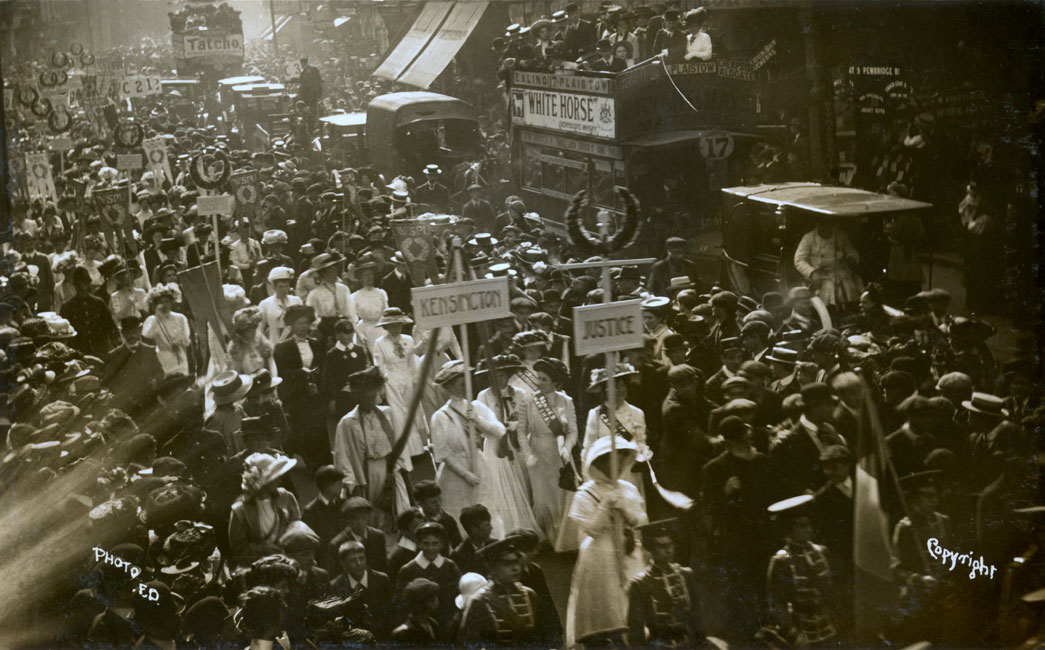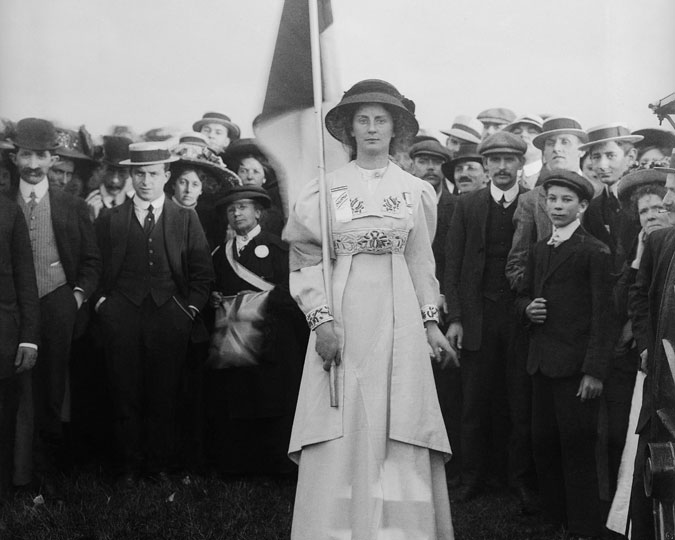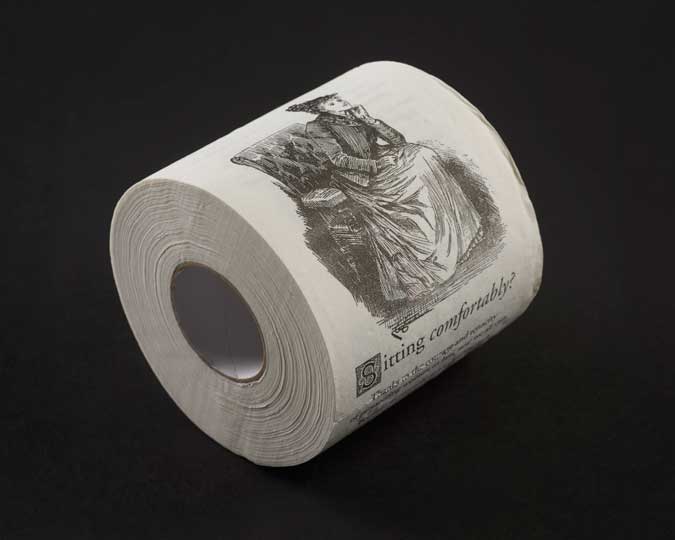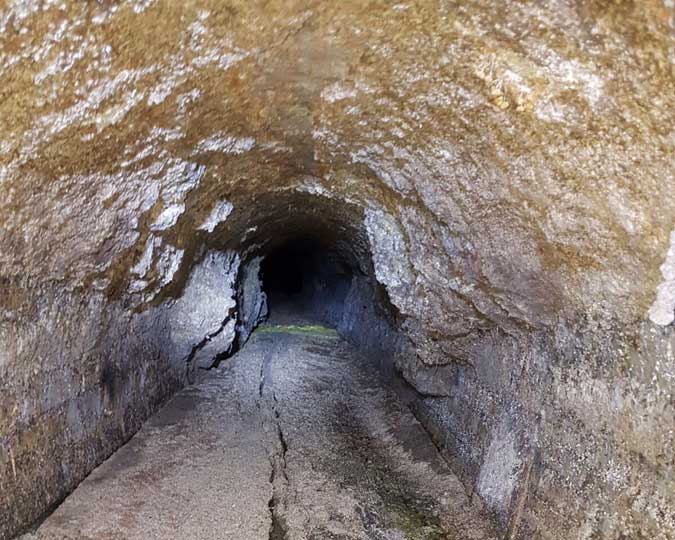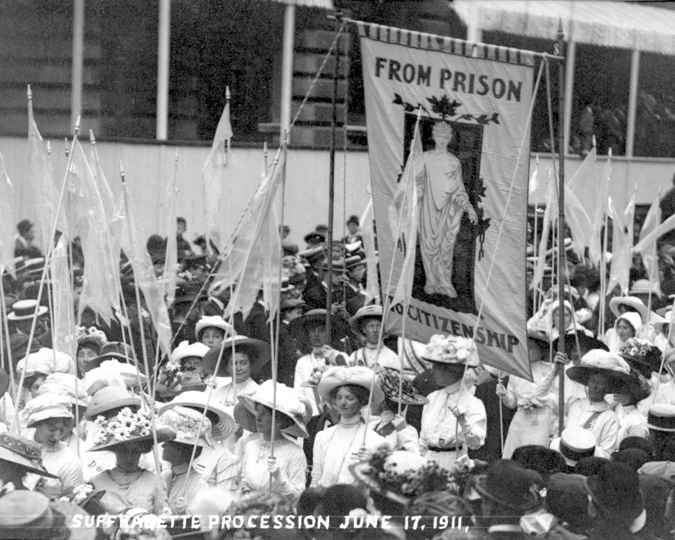2018 marks 100 years since women were first given the right to vote in Britain in parliamentary elections. Find out more about all the Museum of London is doing to mark this momentous occasion.
100 years ago, women were able to vote in British parliamentary elections for the first time. The 1918 Representation of the People Act gave some women over the age of 30 (and all men over the age of 21) the right to vote - a step on the path to full legal equality. The 1918 general election, held in December that year, was the first time that women were able to vote, and the first woman MP, Sinn Féin's Constance Markievicz, was elected.
This major milestone didn't just happen: it was the culmination of decades of determined, fearless campaigning by women and men across Britain, who faced ridicule, abuse, poverty, surveillance and arrest in their fight for the vote. We’ll be using the centenary celebrations to tell the stories of these Suffragettes, through events and displays that show off the world's largest collection relating to the militant Votes for Women campaign.
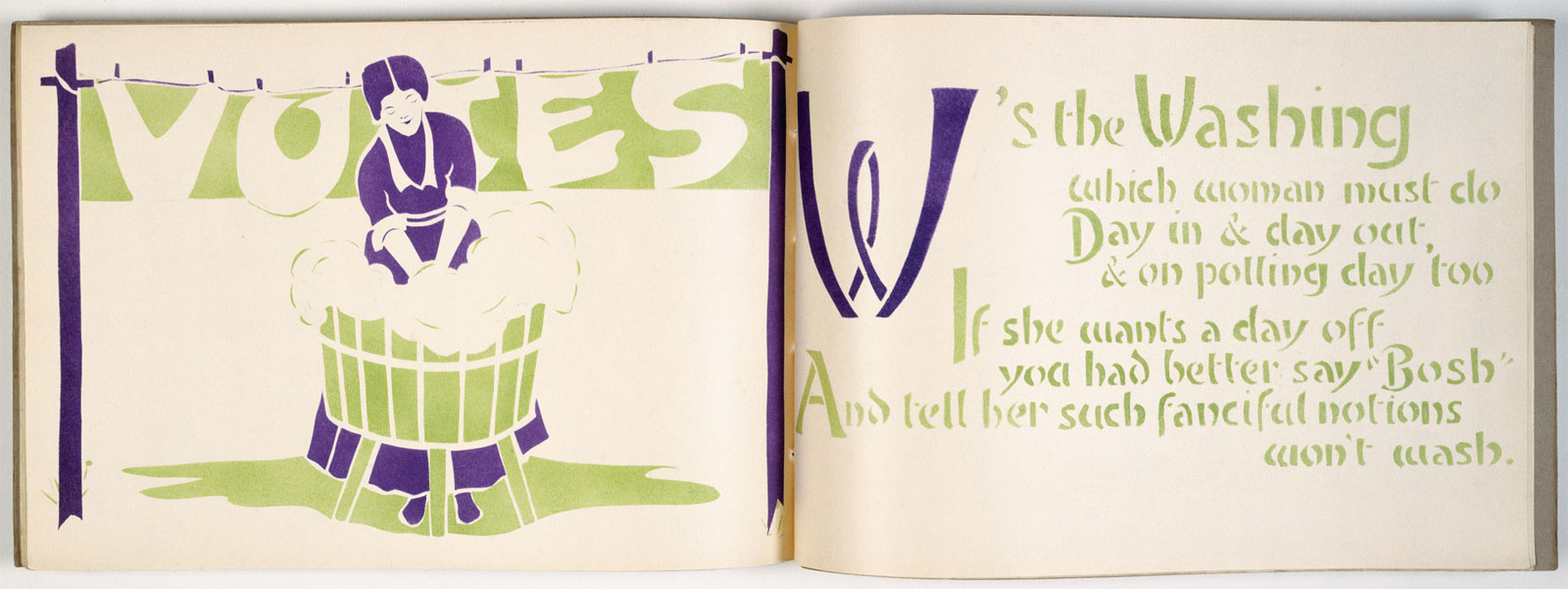
An Anti-Suffrage Alphabet, 1911
Designed by Laurence Housman, this book documents the unfar subjugation of disenfranchised women.
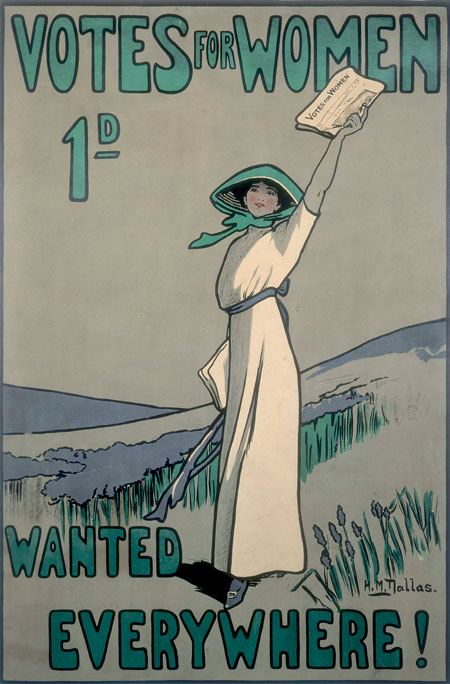
A poster advertising the weekly suffragette newspaper Votes for Women, 1909
Hilda Dallas; ID no. 50.82/1110.
We already have many display cases chronicling the campaign for women's suffrage in our People's City gallery. We'll be adding to this with a special display running throughout 2018, telling the story of individual Suffragette courage and commitment and the power of comradeship and empowerment.
The centrepiece of this commemorative display is a newly commissioned film, which reveals more of our rich and unique Suffragette image collection to the public. However the film is not a traditional documentary – it is much more exciting and creative. Although it highlights key milestones in the campaign for female suffrage, it also considers the legacy of that struggle and its contemporary relevance. We've intereviewed people who share an interest in the Suffragette campaign but also work in the contemporary field of women’s and human rights.
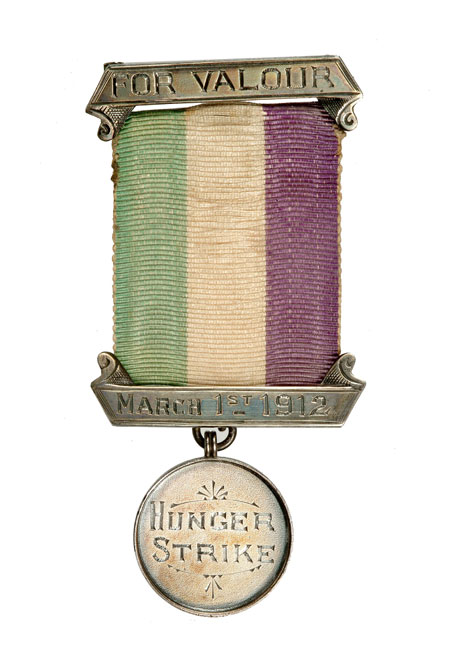
Hunger strike medal presented to Emmeline Pankhurst, 1912
Featured in our new Vote 100 display
The items selected for display are some of the most iconic in the collection. All have a strong personal story and relate to named women who not only served terms of imprisonment for militancy but in many cases, went on hunger strike and endured the brutality of force-feeding. One of the most significant items selected is the hunger-strike medal presented to the celebrated Suffragette leader Emmeline Pankhurst. However the display is equally intended to reveal the story of unknown Suffragettes, such as Emily ‘Kitty’ Willoughby Marshall, Winefride Mary Rix, Janie Terrero and Louise Eates.
This display, which takes over our Capital Concerns space, will open on 2 February and run throughout 2018, closing in January 2019.
The film and display are one of three display strands of the commemorative programme. Between 1 February and 26 April our temporary display area Show Space will be taken over with a display looking at three key aspects of the campaign – Fundraising, Organising and Militancy. Here, for the first time will be displayed items such as a multiple arsonist’s scrapbook, and a cap worn by the Suffragette Organiser Flora ‘General’ Drummond.
However you want to mark the centenary of female suffrage, we hope you'll join us at the Museum of London this year to celebrate Vote 100.








